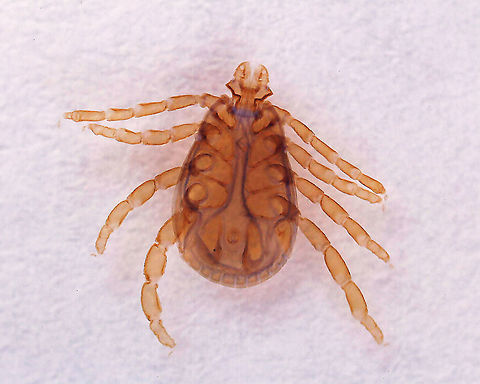
Appearance
The brown dog tick is easily recognized by its reddish-brown color, elongated body shape, and hexagonal basis capituli. Adults are 2.28 to 3.18 mm in length and 1.11 to 1.68 mm in width. They do not have ornamentation on their backs.Distribution
A cosmopolitan species, it can be found in worldwide.Uses
''Rhipicephalus sanguineus'' is one of the most important vectors of diseases in dogs worldwide. In the United States, ''R. sanguineus'' is a vector of many disease-causing pathogens in dogs, including ''Ehrlichia canis'', which causes canine ehrlichiosis, and ''Babesia canis,'' which is responsible for canine babesiosis. In dogs, symptoms of canine ehrlichiosis include lameness and fever; those for babesiosis include fever, anorexia, and anemia. ''R. sanguineus'' has not been shown to transmit the bacteria that cause Lyme disease in humans. In parts of Europe, Asia, and Africa, it is a vector of ''Rickettsia conorii'', known locally as Mediterranean spotted fever, boutonneuse fever, or tick typhus.It can also transmit ''Rickettsia rickettsii,'' the bacteria responsible for causing Rocky Mountain spotted fever in humans in the Southwestern United States.
References:
Some text fragments are auto parsed from Wikipedia.